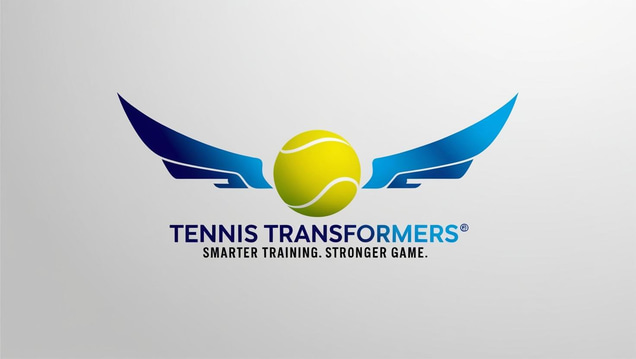Smarter Training for a Stronger Tennis Game
Discover how smarter training techniques can enhance your tennis game. Learn the importance of efficient training methods that set elite players apart and elevate your performance on the court, whether you're a recreational player or a seasoned competitor.
EXERCISE & FITNESS
3/22/20253 min read


Why Smarter Training Makes for a Stronger Tennis Game
In the world of tennis, training is the backbone of success. But not all training is created equal. While hard work is crucial, smarter training is what separates elite players from the rest. Whether you’re a recreational player, an aspiring professional, or a seasoned competitor, understanding how to train efficiently can elevate your game and give you a significant advantage on the court.
The Myth of “More is Better”
Many tennis players believe that the key to improvement is simply spending more hours hitting balls. While dedication is important, overtraining can lead to burnout, injuries, and diminishing returns. Smart training focuses on optimizing performance through targeted, efficient workouts rather than endless repetition. The goal isn’t just to work harder—it’s to work smarter.
Research has shown that the quality of training matters more than the sheer volume. High-intensity, well-structured workouts produce greater gains in speed, agility, and endurance compared to excessive low-intensity training. The best players don’t just put in more hours; they maximize their practice sessions by focusing on technique, strategy, and recovery.
The Role of Tennis-Specific Training
Tennis is a sport that demands a unique combination of speed, power, endurance, flexibility, and mental toughness. Smart training involves tailoring workouts to meet these specific needs rather than following a one-size-fits-all approach.
Tennis-specific training helps players develop the exact skills, movement patterns, and muscle groups needed for optimal performance. Instead of generic workouts, incorporating drills that mimic match situations improves muscle memory and translates directly to competition. For example, footwork drills that simulate lateral movements, split steps, and quick changes of direction will have a much greater impact on your game than simply jogging long distances.
The Power of Recovery and Rest
Many tennis players underestimate the importance of rest and recovery. The sport places a high demand on the body, requiring quick bursts of movement and explosive power. Without adequate recovery, performance declines, and the risk of injuries such as tennis elbow, shoulder strains, and knee pain increases.
Smart training includes scheduled rest days, proper nutrition, hydration, and sleep. Active recovery methods such as foam rolling, stretching, and light mobility exercises can also help speed up muscle repair. Elite players understand that recovery is not a sign of weakness but a necessary part of long-term success.
The Science of Periodization
One of the most effective smart training strategies is periodization. This involves structuring workouts in phases to prevent plateaus and ensure continuous improvement. A periodized program typically includes cycles of endurance building, strength training, skill development, and peak performance.
For example, a tennis player might start with a phase focused on building general endurance and strength before progressing to agility and explosive power. Leading up to a tournament, the focus would shift to match-specific drills, strategy, and mental preparation. By following a structured plan that varies intensity and workload, players can maximize gains while reducing the risk of overuse injuries.
The Mental Aspect of Smart Training
Tennis is as much a mental game as it is a physical one. Smart players incorporate mental strategies such as visualization, goal-setting, and mindfulness to enhance focus, resilience, and confidence on the court.
Studies have shown that visualization techniques can improve motor skills and reaction times. By mentally rehearsing key shots, serves, or match scenarios, players can reinforce neural pathways, making real-life execution more automatic. Additionally, managing stress and staying mentally sharp can be the difference between winning and losing crucial points in high-pressure situations.
Technology and Data-Driven Training
Modern tennis players have access to cutting-edge technology that can optimize training. Wearable devices track heart rate, movement patterns, and workload, providing valuable data on performance and fatigue levels. Video analysis helps identify weaknesses in technique, while AI-driven training programs offer personalized recommendations based on individual strengths and weaknesses.
Using technology to track progress allows players to make informed adjustments to their training regimen. Instead of guessing whether they’re improving, they have concrete data to measure progress and refine their approach.
Cross-Training and Injury Prevention
Focusing solely on hitting tennis balls can lead to muscle imbalances and overuse injuries. Cross-training—incorporating different forms of exercise—helps build overall athleticism and reduces strain on specific muscle groups. For example, incorporating strength training, yoga, or swimming can improve endurance, flexibility, and injury prevention.
Smart training includes injury prevention strategies such as mobility work, proper warm-ups, and balanced strength development. A player who takes the time to address weaknesses and imbalances is more likely to stay healthy and perform consistently at a high level.
Conclusion
Training smarter, not just harder, is the key to unlocking peak performance in tennis. By focusing on tennis-specific training, prioritizing recovery, utilizing periodization, incorporating mental strategies, leveraging technology, and preventing injuries, players can maximize their potential while minimizing setbacks.
The best players don’t just grind through practice—they train intelligently, using every tool available to refine their skills and elevate their game. Whether you’re looking to dominate the court or simply improve your performance, adopting smarter training principles will make you stronger, faster, and more resilient. Instead of just putting in the hours, make every minute count, and you’ll see the difference where it matters most—on match day.
©2025 Tennis Transformers. All rights reserved
Disclosure
This website contains affiliate links. If you purchase through these links I may earn a small commission at no extra cost to you. I only recommend products I believe add value to you. This helps support my work and allows me to continue providing valuable content. Thank you for your support!
